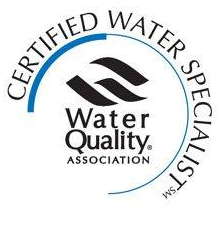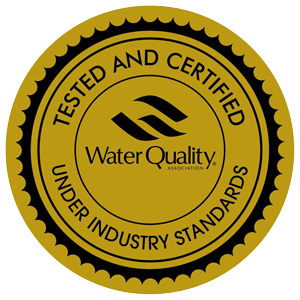 (905) 607-5999
(905) 607-5999  1-833-837-9944
1-833-837-9944 - Company
- Residential
- MATRIKX Carbon Block & Extruded Carbon Filter Cartridges
- Quantum 1000 Water Filtration System
- Gold Line Reverse Osmosis Water Systems
- Quantum 1000 Filter Cartridge
- Pentek Pentair Speciality Filter Cartridges
- Water Storage Tanks for Reverse Osmosis Water System
- Quick Connect & Push in Fittings
- Culligan Compatible Membranes
- Rain Soft Genuine & Compatible Membranes
- Hydrotech Genuine and Compatible Membranes
- PURO TWSIT Reverse Osmosis Water System NSF Approved Gold Seal
- Res Care Water Softener Resin Cleaner RK41N 1 Gallon (3.78 L)
- PRO CHEMICALS PROFESSIONAL WATER TREATMENT PRODUCTS
- PuroTwist Replacement Filters and Membranes
- Potassium Permanganate Green Sand Iron Filter Regeneration
- Res Care Water Softener Resin Cleaner RK32N 1 QT (0.946 ml)
- Culligan, Hydrotech, Microline, Rain Soft Compatible and Original Filter Cartridges and Membranes
- Pacifik Bottled Water Cooler and Dispensers
- Pacifik Bottle Lass Water Cooler and Dispensers
- AQUA ONE Antioxidant & Alkaline Reverse Osmosis Water Systems
- Fluoride & Lead Removal Water Systems
- ALKA + High pH Alkaline Water Filter
- Whole House Big Blue Water Filtration Systems
- Water Softeners & Conditioners
- Microline (Clack) Genuine and Compatible Membranes
- Water Softener with GAC & KDF
- Iron, Hydrogen Sulfide, Manganese, Radium, Arsenic, Color & Odor Removal Filtration Systems
- UlLTRA PRO Water Filtration System with Ultra Violet Light Sterilizer
- Water Cooler and Dispensers
- Bottle & Bottle Less Water Coolers and Dispensers on Lease & Rent
- Residential Water Distillers
- Membranes, Membrane Housings & Accessories
- Ultraviolet Light Sanitizers, Bulbs, Sleeves, Ballasts & Accessories
- Designer, Contemporary & Standard Faucets
- PENTEK Carbon Block & Extruded Carbon Filter Cartridges
- PENTEK Specialty Filter Cartridges
- PENTEK Sediments & Particle Filter Cartridges
- Water Filter Cartridges
- Tanks, Valves, Meters, Membranes & Other Accessories
- Commercial
- Distilled Water
- DI Water
- Alkaline Water
- RO Water
- Spring Water
- Super Gold Water
- Super Silver Water gg
- Company
- Residential
- ALKA + High pH Alkaline Water Filter
- AQUA ONE Antioxidant & Alkaline Reverse Osmosis Water Systems
- Bottle & Bottle Less Water Coolers and Dispensers on Lease & Rent
- Culligan Compatible Membranes
- Culligan, Hydrotech, Microline, Rain Soft Compatible and Original Filter Cartridges and Membranes
- Designer, Contemporary & Standard Faucets
- Fluoride & Lead Removal Water Systems
- Gold Line Reverse Osmosis Water Systems
- Hydrotech Genuine and Compatible Membranes
- Iron, Hydrogen Sulfide, Manganese, Radium, Arsenic, Color & Odor Removal Filtration Systems
- MATRIKX Carbon Block & Extruded Carbon Filter Cartridges
- Membranes, Membrane Housings & Accessories
- Microline (Clack) Genuine and Compatible Membranes
- Pacifik Bottle Lass Water Cooler and Dispensers
- Pacifik Bottled Water Cooler and Dispensers
- PENTEK Carbon Block & Extruded Carbon Filter Cartridges
- Pentek Pentair Speciality Filter Cartridges
- PENTEK Sediments & Particle Filter Cartridges
- PENTEK Specialty Filter Cartridges
- Potassium Permanganate Green Sand Iron Filter Regeneration
- PRO CHEMICALS PROFESSIONAL WATER TREATMENT PRODUCTS
- PURO TWSIT Reverse Osmosis Water System NSF Approved Gold Seal
- PuroTwist Replacement Filters and Membranes
- Quantum 1000 Filter Cartridge
- Quantum 1000 Water Filtration System
- Quick Connect & Push in Fittings
- Rain Soft Genuine & Compatible Membranes
- Res Care Water Softener Resin Cleaner RK32N 1 QT (0.946 ml)
- Res Care Water Softener Resin Cleaner RK41N 1 Gallon (3.78 L)
- Residential Water Distillers
- UlLTRA PRO Water Filtration System with Ultra Violet Light Sterilizer
- Ultraviolet Light Sanitizers, Bulbs, Sleeves, Ballasts & Accessories
- Water Cooler and Dispensers
- Water Softener with GAC & KDF
- Water Softeners & Conditioners
- Water Storage Tanks for Reverse Osmosis Water System
- Whole House Big Blue Water Filtration Systems
- Water Filter Cartridges
- Tanks, Valves, Meters, Membranes & Other Accessories
- Commercial
- Distilled Water
- DI Water
- Alkaline Water
- RO Water
- Spring Water
- Super Gold Water
- Super Silver Water bbv
Home |
Commercial & Industrial |
Catalytic Granular Activated Carbon |
Catalytic Granular Activated Carbon
Removal of Chloramine
Many water utilities across the country are transitioning to chloramine for disinfection as an alternative to chlorine. This change is in response to stricter regulations on disinfection byproducts (DBPs), which are created when chlorine reacts with organics in water. Chloramine, a combination of chlorine and ammonia, is more stable and does not create DPBs.
Removing chloramine at the point of use, however, is more difficult than removing chlorine. Standard granular activated carbon (GAC) and carbon block products have limited capacity for chloramine reduction. Products known as “catalytic” or “surface-modified” activated carbon can provide a solution.
In general, the catalytic properties of carbon are measured by the rate at which carbon decomposes hydrogen peroxide. The resulting peroxide number, measured in minutes, estimates the carbon’s utility in any catalytic application, including chloramine reduction. Based on the comparative results obtained for different mesh size commercial carbons, the efficiency of chloramine reduction is discussed in the terms of peroxide decomposition capacity and further extended to the total life (volume) claims for corresponding GAC cartridge and carbon block.









Toll Free 1-877-387-9944
AQUA ONE Filtration Products & Services
by AQUA ONE Filtration Inc.AQUA ONE Filtration Products & Services
by AQUA ONE Filtration Inc.AQUA ONE Filtration Products
by AQUA ONE Filtration Inc.AQUA ONE Water Filtration Inc.
by AQUA ONE Filtration Inc.Aqua One Filtration International Filling Plant 1
by AQUA ONE Filtration InternationalAMIR9041
by AQUA ONE Filtration InternationalAMIR9042
by AQUA ONE Filtration InternationalAMIR9043
by AQUA ONE Filtration InternationalAMIR8956 Copy
by AQUA ONE Filtration InternationalAMIR8958 Copy
by AQUA ONE Filtration InternationalAMIR8959 Copy
by AQUA ONE Filtration InternationalAMIR8960 Copy
by AQUA ONE Filtration InternationalAQUA ONE Filtration International
by AQUA ONE Filtration InternationalAqua One Filtration International Filling Plant 1
by AQUA ONE Filtration InternationalAqua One Filtration International Filling Plant 1
by AQUA ONE Filtration InternationalAQUA ONE Filtration Inc.
by AQUA ONE Filtration Inc.AQUA ONE Filtration Products slide show
by AQUA ONE Filtration Inc.Reverse Osmosis Water Filtration System
by AQUA ONE Filtration Inc.AQUA ONE Filtration Free Water Delivery
by AQUA ONE Filtration Inc.AQUA ONE Antioxidant Alkaline Water System
by AQUA ONE Filtration Inc.AQUA ONE Antioxidant Alkaline Water
by AQUA ONE Filtration Inc.AQUA ONE Antioxidant Alkaline Water Purification System 1
by AQUA ONE Filtration Inc.AQUA ONE Antioxidant Alkaline Water Purification System 2
by AQUA ONE Filtration Inc.AQUA ONE Antioxidant Alkaline Water Purification System 3
by AQUA ONE Filtration Inc.AQUA ONE Antioxidant Alkaline Water Purification System 4
by AQUA ONE Filtration Inc.AQUA ONE Filtration Products Slide Show
by AQUA ONE Filtration Inc.Aqua One Filtration International Filling Area 2
by AQUA ONE Filtration InternationalAqua One Filtration International Filling Area 2
by AQUA ONE Filtration InternationalAqua One Filtration International Filling Plant 1
by AQUA ONE Filtration InternationalAqua One Filtration International Processing Plant 1
by AQUA ONE Filtration InternationalAqua One Filtration International Plant 1
by AQUA ONE Filtration InternationalAQUA ONE Filtration Products Slide Show 1
by AQUA ONE Filtration Inc.Aqua One Filtration International Filling Plant 1
by AQUA ONE Filtration InternationalAqua One Filtration International Filling Area 1
by AQUA ONE Filtration InternationalAqua One Filtration International Lab 1
by AQUA ONE Filtration InternationalAqua One Filtration International Lab 1
by AQUA ONE Filtration InternationalAqua One Filtration International Lab 1
by AQUA ONE Filtration InternationalAqua One Filtration International Lab 1
by AQUA ONE Filtration InternationalAqua One Filtration International Filling Plant 1
by AQUA ONE Filtration InternationalAqua One Filtration International Front Counter
by AQUA ONE Filtration InternationalAqua One Filtration International Plant 1
by AQUA ONE Filtration InternationalAqua One Filtration International Micro Filters
by AQUA ONE Filtration InternationalAqua One Filtration International Lab 2
by AQUA ONE Filtration InternationalAqua One Filtration International Front Counter
by AQUA ONE Filtration InternationalAqua One Filtration International Filling Plant 1
by AQUA ONE Filtration InternationalAqua One Filtration International Office 2
by AQUA ONE Filtration InternationalAqua One Filtration International Micro Filters and UV
by AQUA ONE Filtration InternationalAqua One Filtration TVC Pakistan( Marketed by Buraqadvertising03347866754)
by BuraQ AdvertisingAqua one filtration in lahore pakistan
by Ali KhalidAqua One Filtration International Office 2
by AQUA ONE Filtration InternationalAqua One Filtration International
by AQUA ONE Filtration InternationalAqua One Filtration International Front Sign
by AQUA ONE Filtration InternationalAqua One Filtration International Front Counter
by AQUA ONE Filtration InternationalAqua One Filtration International Lab 2
by AQUA ONE Filtration InternationalAqua One Filtration International Office 2
by AQUA ONE Filtration InternationalAqua One Filtration International Lab 2
by AQUA ONE Filtration InternationalAqua One Filtration International Front Counter
by AQUA ONE Filtration InternationalAqua One Filtration International Front Counter
by AQUA ONE Filtration InternationalAqua One Filtration International Front Counter
by AQUA ONE Filtration InternationalAll Rights Reserved. Warranty | Privacy Policy | Terms of Use










